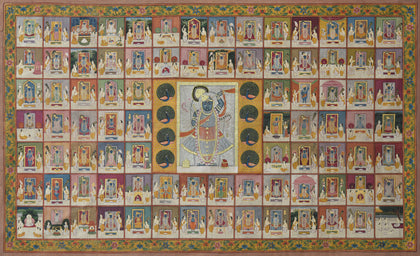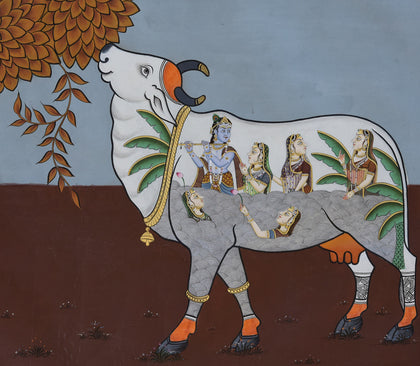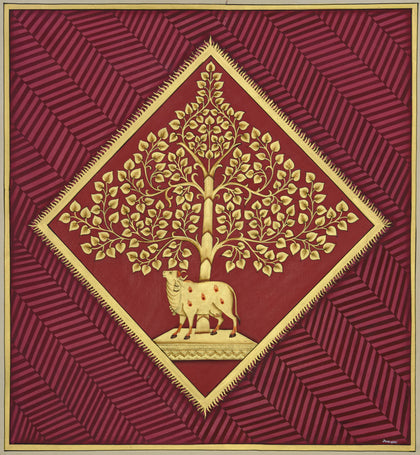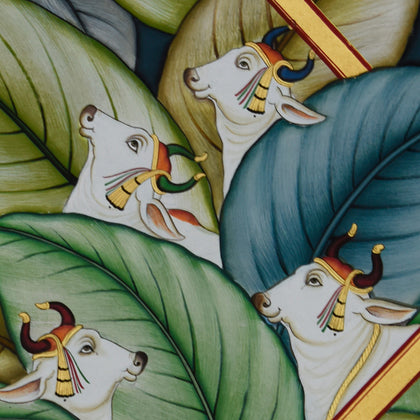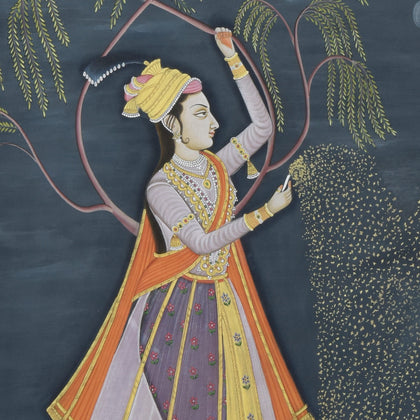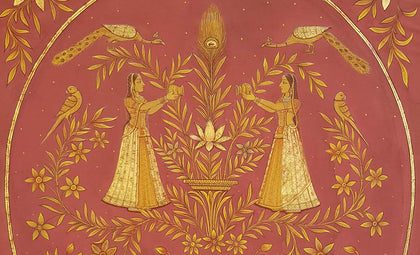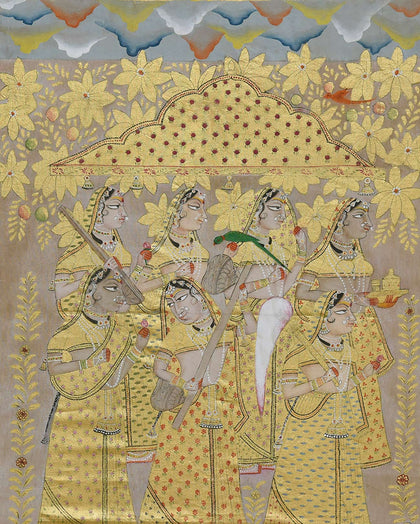Pichwai is a style of painting that originated over 400 years ago in the town of Nathdwara, near Udaipur in Rajasthan, India. Intricate and visually stunning, pichwais depict tales from Lord Krishna’s life.
The word Pichwai comes from ‘pichh’ meaning back, and ‘wai’, meaning textile hanging. Pichwais are made by members of the Pushti Marg sect, founded by Shri Vallabhacharya in the 16th century. Originally, they were used to decorate the temple of Shrinathji in Nathdwara, hung behind the deity to celebrate different seasons and events in Lord Krishna’s life. Over time, pichwais also found a place in the homes of art connoisseurs, owing to its visual appeal.
Creating a pichwai can take several months, and requires immense skill. There is a focus on detail and miniature work, and Lord Krishna is often depicted as Shrinathji, which is the deity manifest as a seven-year-old child. Like several other traditional Indian art forms, pichwais too, require more recognition and revival.
Learn more about Pichwais.






















































































 View Full Screen
View Full Screen





